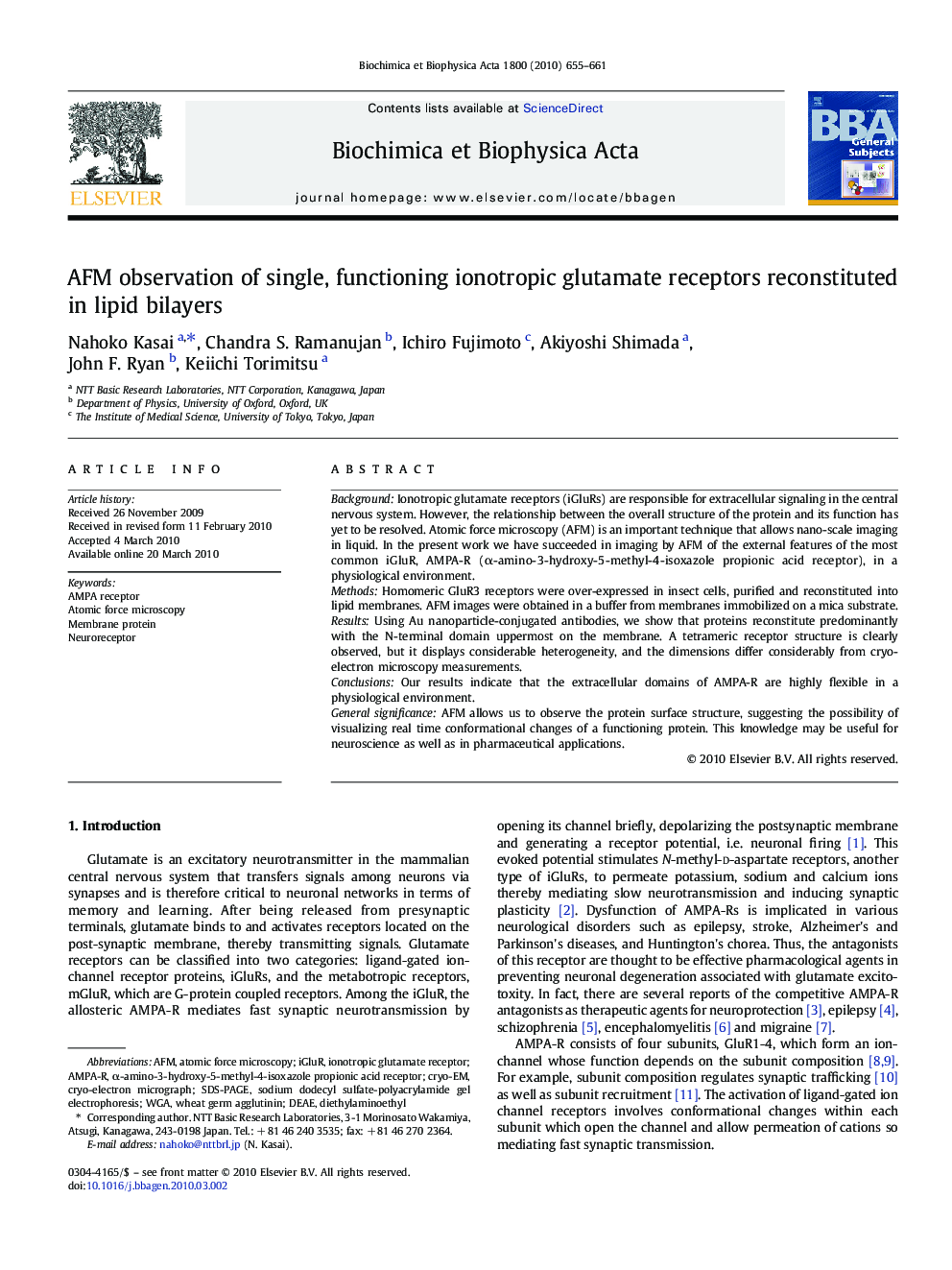| Article ID | Journal | Published Year | Pages | File Type |
|---|---|---|---|---|
| 1947902 | Biochimica et Biophysica Acta (BBA) - General Subjects | 2010 | 7 Pages |
BackgroundIonotropic glutamate receptors (iGluRs) are responsible for extracellular signaling in the central nervous system. However, the relationship between the overall structure of the protein and its function has yet to be resolved. Atomic force microscopy (AFM) is an important technique that allows nano-scale imaging in liquid. In the present work we have succeeded in imaging by AFM of the external features of the most common iGluR, AMPA-R (α-amino-3-hydroxy-5-methyl-4-isoxazole propionic acid receptor), in a physiological environment.MethodsHomomeric GluR3 receptors were over-expressed in insect cells, purified and reconstituted into lipid membranes. AFM images were obtained in a buffer from membranes immobilized on a mica substrate.ResultsUsing Au nanoparticle-conjugated antibodies, we show that proteins reconstitute predominantly with the N-terminal domain uppermost on the membrane. A tetrameric receptor structure is clearly observed, but it displays considerable heterogeneity, and the dimensions differ considerably from cryo-electron microscopy measurements.ConclusionsOur results indicate that the extracellular domains of AMPA-R are highly flexible in a physiological environment.General significanceAFM allows us to observe the protein surface structure, suggesting the possibility of visualizing real time conformational changes of a functioning protein. This knowledge may be useful for neuroscience as well as in pharmaceutical applications.
